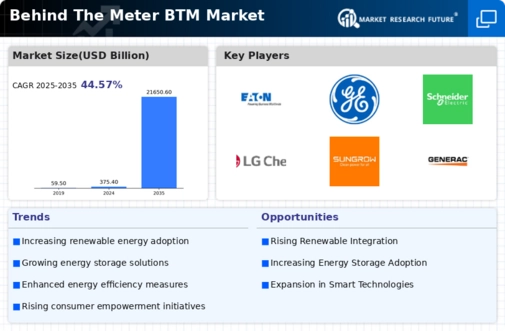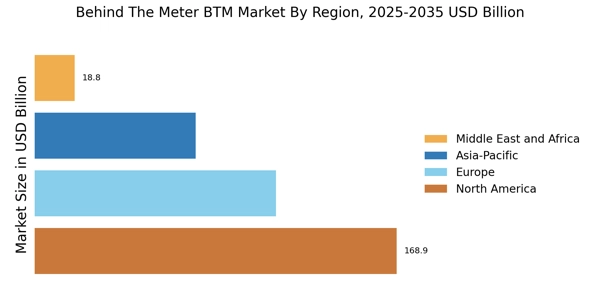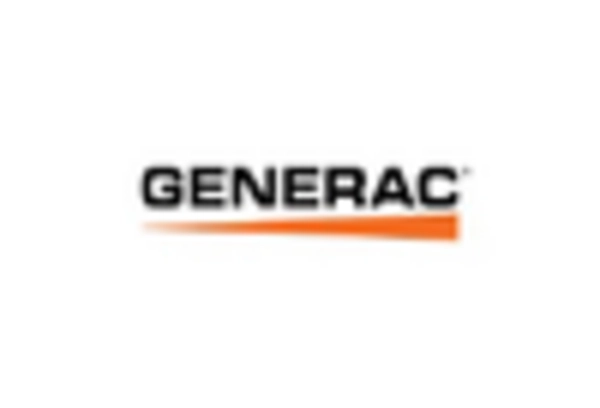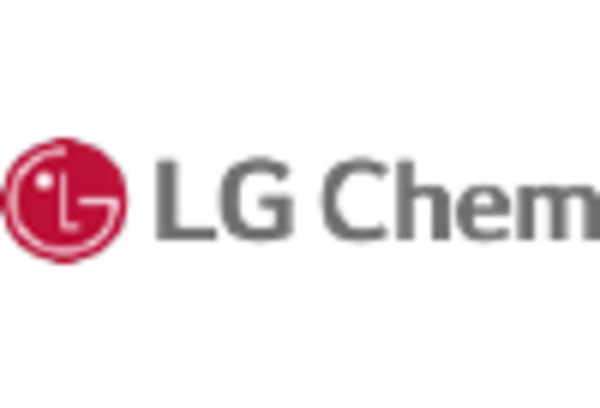Rising Energy Costs
The Behind The Meter Market BTM Market is experiencing a notable shift due to the rising costs of energy. As utility rates continue to escalate, consumers are increasingly seeking ways to mitigate their energy expenses. This trend is particularly evident in residential and commercial sectors, where energy storage systems and on-site generation technologies are being adopted to reduce reliance on grid electricity. According to recent data, energy prices have surged by approximately 15% over the past five years, prompting a greater interest in BTM solutions. This market driver indicates a growing awareness among consumers regarding the financial benefits of investing in energy efficiency and self-generation technologies, thereby propelling the Behind The Meter Market BTM Market forward.
Supportive Policy Frameworks
Supportive policy frameworks are emerging as a vital driver for the Behind The Meter Market BTM Market. Governments are increasingly implementing regulations and incentives to promote renewable energy adoption and energy efficiency. These policies often include tax credits, rebates, and grants for consumers who invest in BTM technologies. For instance, recent legislative measures have introduced financial incentives for energy storage systems, which are expected to enhance the market's growth. As these supportive frameworks continue to evolve, they are likely to create a favorable environment for the Behind The Meter Market BTM Market, encouraging more consumers to adopt innovative energy solutions.
Growing Environmental Awareness
The Behind The Meter Market BTM Market is significantly influenced by the increasing environmental awareness among consumers and businesses. As climate change concerns intensify, there is a growing demand for sustainable energy solutions. This shift is driving the adoption of renewable energy sources, such as solar and wind, which can be integrated into BTM systems. Data indicates that the installation of residential solar panels has increased by over 20% in the last two years, reflecting a broader trend towards sustainability. Consequently, the Behind The Meter Market BTM Market is likely to benefit from this heightened focus on environmental responsibility, as more consumers seek to reduce their carbon footprint through energy-efficient technologies.
Increased Demand for Energy Independence
The desire for energy independence is becoming a prominent driver in the Behind The Meter Market BTM Market. Consumers are increasingly motivated to reduce their dependence on traditional energy sources and utility providers. This trend is particularly evident in regions prone to energy supply disruptions or high energy costs. The rise of distributed energy resources, such as solar panels and battery storage systems, empowers consumers to generate and store their own energy. Recent surveys indicate that nearly 60% of homeowners express interest in energy independence, suggesting a strong market potential for BTM solutions. This growing demand is likely to propel the Behind The Meter Market BTM Market as more individuals and businesses seek to take control of their energy future.
Technological Advancements in Energy Management
Technological advancements play a crucial role in shaping the Behind The Meter Market BTM Market. Innovations in energy management systems, including smart meters and advanced analytics, enable consumers to monitor and optimize their energy usage effectively. These technologies facilitate real-time data collection and analysis, allowing users to make informed decisions about their energy consumption. The integration of artificial intelligence and machine learning into energy management systems is also gaining traction, enhancing predictive capabilities and operational efficiency. As a result, the Behind The Meter Market BTM Market is likely to witness increased adoption of these sophisticated technologies, which can lead to improved energy savings and reduced operational costs for consumers.




















Leave a Comment